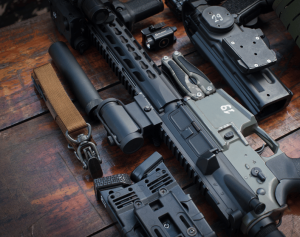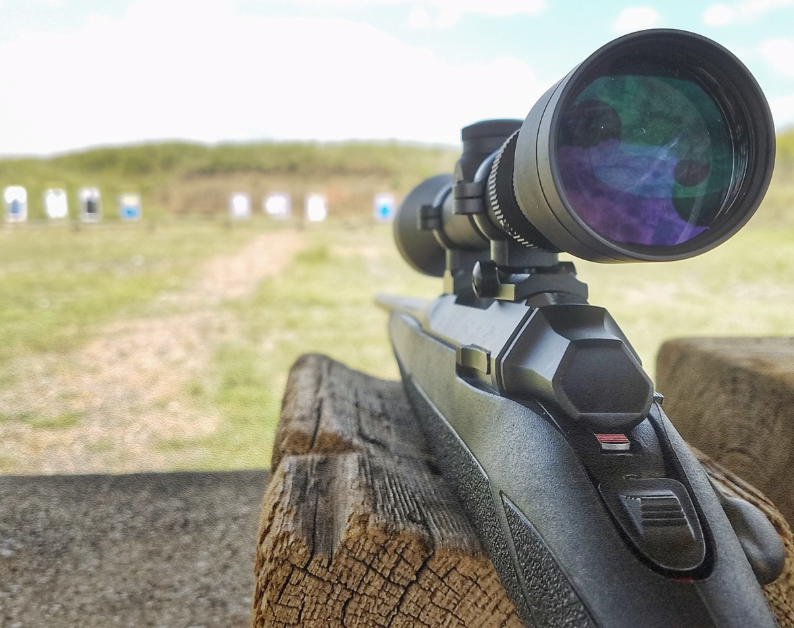



The rifle world has seen a remarkable shift toward personalization. More shooters are discovering what hunters and competitive marksmen have known for decades: there’s something magical about a firearm built specifically for your hands, your shooting style, and your goals.
Factory rifles serve the “average” shooter, but custom rifles are designed for you. When you partner with experts like Deep Roots Rifle, you’re crafting a precision instrument that fits perfectly and performs beyond factory limitations. The difference becomes apparent the moment you shoulder a properly fitted custom rifle; everything feels natural, balanced, and purposeful.
Define your mission first. Are you stalking whitetails through dense timber or making precision shots across open valleys? Competitive shooting demands different characteristics than hunting; a bench-rest rifle optimized for paper-punching accuracy might be completely impractical for backcountry elk hunting, where every ounce matters.
Environmental factors matter tremendously. Mountain hunting requires different considerations than swamp hunting, while cold temperatures affect barrel harmonics and humidity impacts stock materials. Local game size influences caliber selection. A rifle perfect for Texas hogs might be overkill for prairie dogs but underpowered for brown bears.
Consider your primary use case first, then evaluate whether compromises make sense for secondary applications. Many shooters try to build one rifle for everything, but that’s like buying one tool for your entire workshop.
Action Bolt-action remains the gold standard for precision, offering inherent accuracy advantages and simpler maintenance than semi-automatic systems. While semi-autos excel for rapid follow-up shots, they introduce complexity that can affect consistency. Reliability trumps flashy features; smooth bolt cycles and consistent lockup matter more than exotic materials or marketing claims.
Barrel: Caliber selection drives everything else in your build. Popular calibers like .308 Winchester offer excellent versatility and ammunition availability, while specialized cartridges like 6.5 Creedmoor provide ballistic advantages for specific applications. Barrel length affects velocity and maneuverability; longer barrels generate higher velocities but can become unwieldy in tight spaces.
Stock/Chassis: Proper fit transforms your entire shooting experience. The length of the pull should position your trigger finger correctly while maintaining a comfortable cheek weld. Grip style affects natural point of aim and recoil management. Traditional wooden stocks offer classic aesthetics and a natural feel, while modern chassis systems provide extensive adjustability and modularity for changing conditions.
Optics and Mounting: Scope selection depends entirely on intended use. Close-range hunting requires low magnification with wide field of view for quick target acquisition, while long-range applications benefit from higher magnification and sophisticated reticles with windage and elevation markings. Quality rings and bases are critical, as inconsistent mounting creates accuracy problems that no amount of load development can solve.
Additional Upgrades: Muzzle brakes reduce felt recoil and muzzle jump but increase noise and blast signature significantly. Suppressors provide hearing protection and reduced signature, but add length and weight. Bipods enhance stability for precision shots but may snag during rapid movement through cover. Evaluate each upgrade against your actual needs rather than perceived advantages.
Customization For Fit and Performance: Professional gun fitting goes beyond basic measurements. Comb height affects scope alignment and cheek weld comfort, while grip angle influences natural pointing and recoil control. Drop-at-the-heel and cast-off measurements ensure the rifle points naturally when shouldered, quickly critical for hunting scenarios.
Working with experienced gunsmiths provides invaluable insights into component interactions and potential issues. They’ve seen common problems and understand how seemingly minor changes can dramatically affect performance. Many builders offer consultation services and demo opportunities to evaluate different configurations before finalizing specifications, potentially saving costly mistakes.
Establish realistic expectations early. Custom builds range from modest upgrades to substantial investments.
Priority spending:
Save money on:
Factory custom options offer a middle ground between full custom and production rifles, allowing some personalization at a lower cost but with limited flexibility.
Professional builders follow systematic processes designed to eliminate guesswork. Initial consultations establish requirements, shooting goals, and physical measurements. Component selection balances performance objectives with budget constraints while ensuring compatibility between all systems. Build timelines vary based on component availability and shop workload popular builders often have several months of backlogs.
Deep Roots Rifle exemplifies professional custom building with their methodical approach. They understand each rifle represents a significant investment and personal commitment. Their experience helps navigate countless decisions involved in creating your ideal rifle, from subtle stock dimensions to barrel contour selections that affect balance and handling.
Quality builders provide comprehensive after-sales support, standing behind their work with warranties and ongoing assistance for maintenance questions or future modifications. This relationship often extends well beyond the initial build.
Custom barrels require a proper break-in procedure to achieve their accuracy potential. Follow manufacturer recommendations carefully; shortcuts can permanently affect performance. Most procedures involve specific round counts with thorough cleaning between groups, gradually conditioning the barrel surface.
Ongoing maintenance preserves accuracy and extends component life significantly. Clean regularly but avoid over-cleaning, which can damage barrel surfaces. Proper storage prevents corrosion and stock warping in changing humidity conditions.
Your needs may evolve over time, and quality custom rifles accommodate reasonable modifications. Different stocks, trigger adjustments, or scope changes become possible when you plan for future upgrades during initial design phases. This adaptability represents another advantage of custom builds over factory rifles.
Building a custom rifle means investing in improved performance and deeper connection to shooting sports. Whether pursuing tighter groups or more successful hunts, custom rifles deliver advantages factory offerings can’t match.
Ready to get started? Contact Deep Roots Rifle today for a free consultation or browse their custom rifle gallery to see what’s possible.

You must be 18 years old to visit our website.
Copyright © 2025 deeprootsrifleco.com | All rights reserved.